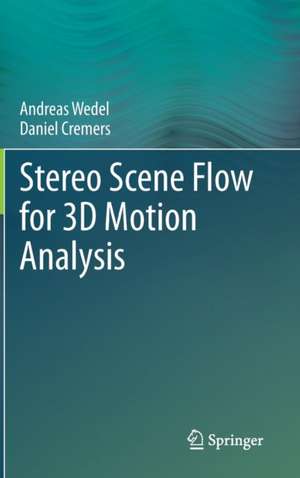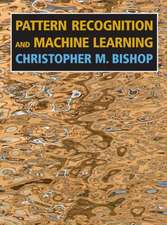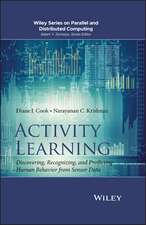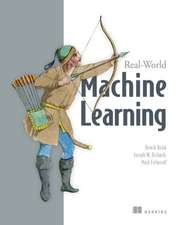Stereo Scene Flow for 3D Motion Analysis
Autor Andreas Wedel, Daniel Cremersen Limba Engleză Hardback – 17 aug 2011
| Toate formatele și edițiile | Preț | Express |
|---|---|---|
| Paperback (1) | 580.56 lei 38-44 zile | |
| SPRINGER LONDON – 23 aug 2016 | 580.56 lei 38-44 zile | |
| Hardback (1) | 642.65 lei 6-8 săpt. | |
| SPRINGER LONDON – 17 aug 2011 | 642.65 lei 6-8 săpt. |
Preț: 642.65 lei
Preț vechi: 803.31 lei
-20% Nou
Puncte Express: 964
Preț estimativ în valută:
122.97€ • 128.74$ • 101.75£
122.97€ • 128.74$ • 101.75£
Carte tipărită la comandă
Livrare economică 05-19 aprilie
Preluare comenzi: 021 569.72.76
Specificații
ISBN-13: 9780857299642
ISBN-10: 0857299646
Pagini: 128
Ilustrații: IX, 128 p. 74 illus., 60 illus. in color.
Dimensiuni: 155 x 235 x 13 mm
Greutate: 0.34 kg
Ediția:2011
Editura: SPRINGER LONDON
Colecția Springer
Locul publicării:London, United Kingdom
ISBN-10: 0857299646
Pagini: 128
Ilustrații: IX, 128 p. 74 illus., 60 illus. in color.
Dimensiuni: 155 x 235 x 13 mm
Greutate: 0.34 kg
Ediția:2011
Editura: SPRINGER LONDON
Colecția Springer
Locul publicării:London, United Kingdom
Public țintă
ResearchCuprins
Machine Vision Systems.- Optical Flow Estimation.- Residual Images and Optical Flow Results.- Scene Flow.- Motion Metrics for Scene Flow.- Extensions of Scene Flow.- Conclusion and Outlook.
Textul de pe ultima copertă
The accurate and precise estimation of three-dimensional motion vector fields in real time remains one of the key targets for the discipline of computer vision.
This important text/reference presents methods for estimating optical flow and scene flow motion with high accuracy, focusing on the practical application of these methods in camera-based driver assistance systems. Clearly and logically structured, the book builds from basic themes to more advanced concepts, covering topics from variational methods and optic flow estimation, to adaptive regularization and scene flow analysis. This in-depth discussion culminates in the development of a novel, accurate and robust scene flow method for the higher-level challenges posed by real-world applications.
Topics and features:
This important text/reference presents methods for estimating optical flow and scene flow motion with high accuracy, focusing on the practical application of these methods in camera-based driver assistance systems. Clearly and logically structured, the book builds from basic themes to more advanced concepts, covering topics from variational methods and optic flow estimation, to adaptive regularization and scene flow analysis. This in-depth discussion culminates in the development of a novel, accurate and robust scene flow method for the higher-level challenges posed by real-world applications.
Topics and features:
- Reviews the major advances in motion estimation and motion analysis, and the latest progress of dense optical flow algorithms
- Investigates the use of residual images for optical flow
- Examines methods for deriving motion from stereo image sequences
- Analyses the error characteristics for motion variables, and derives scene flow metrics for movement likelihood and velocity
- Introduces a framework for scene flow-based moving object detection and segmentation, and discusses the application of Kalman filters for propagating scene flow estimation over time
- Includes pseudo code for all important computational challenges
- Contains Appendices on data terms and quadratic optimization, and scene flow implementation using Euler-Lagrange equations, in addition to a helpful Glossary and Index
Caracteristici
Describes the computation of precise and accurate optical flow, and scene flow, in real-time applications Reviews the major advances in motion estimation and motion analysis, and the latest progress of dense optical flow algorithms Includes pseudo code for all important computational challenges, and contains a Glossary Includes supplementary material: sn.pub/extras










